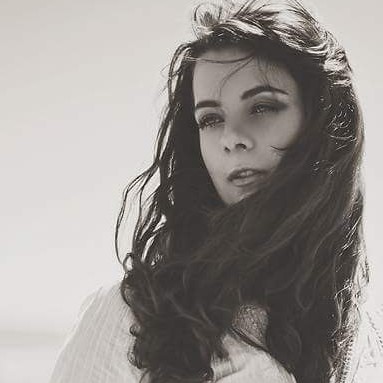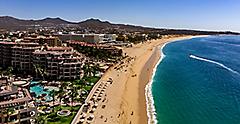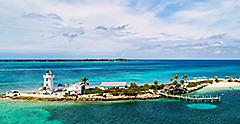Frida Kahlo was and is much more than an artist; she's an icon. During her life and long after, she was the subject of worldwide fanaticism that some called "Fridamania." Kahlo was an intriguing person, to say the least. Her tragic physical injuries, her open bisexuality, her public but unusual marriage, and her vulnerable artwork all compounded into a public personality that was legendary.
For any cultured soul on a Mexico vacation, Frida Kahlo's history is one of the key aspects to unlocking, understanding, and immersing yourself in the intricacies of Latino culture.

About Frida Kahlo's Life, Love, And Death
Frida Kahlo was born in 1907, lived for 47 years and died in 1954 due to health reasons (though some claim suicide). She's known as a self-taught Surrealist but did not classify herself as such.
The themes Frida Kahlo portrayed in her work were mostly biographical. She painted self-portraits, saying, "I paint myself because I am often alone and I am the subject I know best." Her portraits were known for their bright primary colors and deeply human themes (including birth, death and inner turmoil).
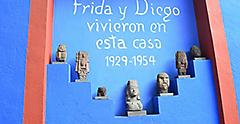
Kahlo's father was a German photographer of Hungarian descent, and her mother of Spanish and Native American ancestry. As an artist, she explored the contrasting sides of her ancestry, one colonial and the other indigenous Mexican, often rejecting the European side despite her close relationship with her father.
When she was just six years old, Kahlo contracted Polio and was bedridden for nine months. Once recovered, she walked with a chronic limp and was encouraged by her father to play soccer, swim and wrestle — all unusual activities for a girl at the time — to regain her strength.
But that was not the end of her physical tragedy. She was later involved in a catastrophic bus accident that drove a steel handrail straight through her side, fracturing her spine and causing devastating injuries. Throughout her life, she underwent 30 operations and struggled with chronic pain and depression as a result; another reason for her mirrored self-portraits.
Once recovered from the bus accident, Kahlo rekindled a relationship with a man named Diego Rivera when she joined the Mexican Communist Party. The two married in 1929 and moved into two separate houses joined by a bridge that you can still visit today. Their relationship was filled with scandal and infidelity from both sides; they divorced in 1939 and remarried a year later.
Despite her personal turmoil and physical woes, Kahlo continued to produce artwork throughout her lifetime. In 1939, the Louvre acquired and curated one of her works, "The Frame," making her the first 20th-century artist to have their work purchased by an internationally renowned museum.
Kahlo's first solo exhibition in Mexico was held in 1953 — a year before her death. She was escorted to the exhibition via ambulance and spent the evening chatting to patrons from a four-poster bed set up expressly for her.
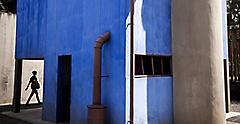
Frida Kahlo And The Mexican Modernism Art Movement
Frida Kahlo was one of the most iconic artists from the Mexican Modernism era (1910-1920). Along with her husband Diego Rivera, Kahlo was fiercely patriotic and nationalist. Her artwork often features the juxtaposition of powerful native Mexican culture over inferior Westernism.
Despite her dual heritage, Frida Kahlo fully embraced her Mexican roots. She extended her Mexican history, social values, cultural nuances and artistic sentimentality into every aspect of her life.

One of the outcomes of the Mexican Revolution was the guaranteeing of basic human rights to all Mexicans. During her life, Kahlo pushed for social equality and freedom of speech. When her husband's mural was defaced and covered up by a Catholic mob, she wrote a passionate letter to the Mexican President with expressive phrasing, saying, "This letter is a protest … against a cowardly and humiliating crime that is being perpetrated in this country."
She continued to write, "In democratic Mexico … we paint saints and Virgins of Guadalupe, as well as paintings with a revolutionary content, on the monumental staircase of the Palacio Nacional ... Let people from all over the world come to Mexico to learn how in Mexico we respect freedom of expression!"
Frida Kahlo And The Women's Rights Movement
During Kahlo's lifetime, the traditional "woman must stay home" attitude was in full force. She chose to contest that attitude by embracing the native (not Americanized) Mexican culture that revered women as powerful pillars of the family unit.
Kahlo rejected beauty norms by proudly displaying her monobrow and mustache. She draped herself in traditional garb consisting of colorful, bright and breezy dresses and skirts. During her time living abroad in New York, she constantly turned heads with her striking appearance. It's said that Kahlo herself is the reason why traditional Mexican clothing is internationally recognized today.
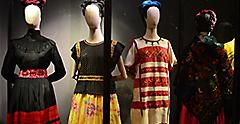
While alive, Kahlo suffered from a miscarriage and was unable to give birth. In her art, she depicted this and many other deeply personal scenes that were (and still are to some degree) taboo. Her openness and ferocity were often referenced in the feminist movement of the 1970s, when Kahlo became nothing less than an icon to millions of women worldwide.
Her husband described her as "the first woman in the history of art to treat, with absolute and uncompromising honesty, one might even say impassive cruelty, those general and specific themes which exclusively affect women."
The Best Frida Kahlo Art Museum To Visit During A Mexico Vacation
Mexico City is packed full of museums that hold artwork by Frida Kahlo and other Mexican Modernism artists. Though as you cruise to Mexico on vacation, you'll find Kahlo's work isn't limited to history; it's alive and thriving in the country's culture, architecture, and fashion. There is even an image of Frida Kahlo that hangs on the wall of one of Royal Caribbean's cruise ships alongside 1000+ other pieces.
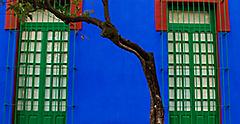
1. Frida Kahlo's Childhood Home, Casa Azul
Casa Azul (The Blue House) is where Kahlo was born, lived during her adulthood, and died. It's the most-visited museum in Mexico City and is a cultural bucket list item for travelers worldwide. The museum was organized by her husband Rivera and contains a great body of both of their works. The house is almost an art piece in itself with its bright blue walls and multicolored floors.
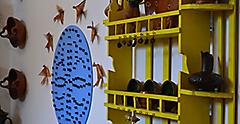
2. Browse The Private Collection Of Dolores Olmedo

3. Museo De Arte Moderno
The Museum of Modern Art curates over 3,000 works of art from the 20th Century. Here you'll find one of Frida Kahlo's most famous paintings depicting her cultural journey: The Two Fridas.
Frida Kahlo's Impact On Mexican Life Is Still Visible Today
Visit Mexico to immerse yourself in everything that inspired Frida Kahloto paint, dress and live the way she did. Her dedication to and interpretation of what it means to be Mexican is a hallmark of Mexico's cultural and feminist history.
Get Royal Deals, Sign Up Today

Getting There
Explore Our Most Affordable Itineraries
Find out how Frida Kahlo captured the attention and fascination of people worldwide with her art on your cruise to Mexico.

